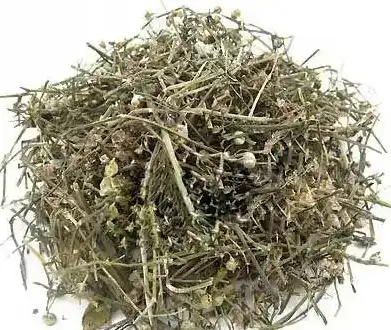Hedyotis Diffusa Extract: Standardization and Quality Control
Hedyotis diffusa, a renowned herb in traditional Chinese medicine, has garnered significant attention for its potential health benefits. As the demand for Hedyotis diffusa extract powder grows, ensuring standardization and quality control becomes paramount. This article delves into the methods and requirements for maintaining the highest standards in Hedyotis diffusa extract production.
HPLC Methods for Hedyotis Diffusa Extract Analysis
High-Performance Liquid Chromatography (HPLC) stands as a cornerstone technique in the analysis of Hedyotis diffusa extract. This sophisticated method allows for the precise identification and quantification of key compounds within the extract, ensuring consistency and potency across batches.
The HPLC analysis of Hedyotis diffusa extract typically focuses on several marker compounds, including ursolic acid, oleanolic acid, and asperuloside. These compounds serve as indicators of the extract's quality and potency. The process involves:
- Sample preparation: Extracting the compounds of interest from the raw material
- Chromatographic separation: Utilizing specific columns and mobile phases to separate the compounds
- Detection: Employing UV or mass spectrometry detectors to identify and quantify the compounds
Advanced HPLC methods may incorporate gradient elution techniques to enhance separation and resolution. This approach allows for the simultaneous analysis of multiple compounds, providing a comprehensive profile of the extract's composition.
Researchers have also explored the use of ultra-high-performance liquid chromatography (UHPLC) for Hedyotis diffusa analysis. This technique offers improved speed and sensitivity compared to traditional HPLC, allowing for faster turnaround times in quality control processes. The development of standardized HPLC methods for Hedyotis diffusa extract powder analysis is an ongoing process.


What Are the USP Standards for Hedyotis Diffusa Powder?
The United States Pharmacopeia (USP) plays a crucial role in establishing quality standards for dietary supplements and herbal products. While specific USP monographs for Hedyotis diffusa powder are still in development, general principles and guidelines apply to ensure its quality and safety.
USP standards typically encompass several key areas:
- Identity: Confirming that the powder indeed comes from Hedyotis diffusa through botanical and chemical tests
- Purity: Ensuring the absence of adulterants, contaminants, and excessive levels of foreign matter
- Strength: Verifying the concentration of active compounds or marker substances
- Performance: Assessing dissolution or disintegration characteristics for dosage forms
For Hedyotis diffusa extract powder, Angelbio often adhere to the following quality parameters:
- Appearance: A fine, homogeneous powder with a characteristic color
- Particle size: Typically less than 80 mesh for optimal solubility and absorption
- Moisture content: Usually less than 5% to prevent microbial growth
- Heavy metals: Limits set for lead, cadmium, mercury, and arsenic
- Microbial limits: Absence of pathogenic bacteria and fungi
While awaiting specific USP monographs, Angelbio often develop in-house specifications based on these general principles and available scientific literature. These specifications are crucial for maintaining batch-to-batch consistency and ensuring the safety and efficacy of Hedyotis diffusa products.
It's worth noting that the development of USP standards is an iterative process. As more research becomes available on Hedyotis diffusa, we can expect more comprehensive and specific guidelines to emerge, further enhancing the quality control processes for this valuable herb.
Heavy Metal Testing Requirements for Hedyotis Diffusa
Heavy metal contamination poses a significant risk in herbal products, including Hedyotis diffusa extract powder. Rigorous testing for heavy metals is essential to ensure the safety and compliance of these products. The requirements for heavy metal testing in Hedyotis diffusa are typically based on international standards and regulations set by various health authorities.
Key heavy metals of concern include:
- Lead (Pb)
- Cadmium (Cd)
- Mercury (Hg)
- Arsenic (As)
The permissible limits for these metals can vary depending on the regulatory body and the intended use of the product. However, common thresholds include:
- Lead: Not more than 3 ppm
- Cadmium: Not more than 0.3 ppm
- Mercury: Not more than 0.1 ppm
- Arsenic: Not more than 2 ppm
Testing methodologies for heavy metals in Hedyotis diffusa often involve sophisticated analytical techniques such as:
- Inductively Coupled Plasma Mass Spectrometry (ICP-MS)
- Atomic Absorption Spectroscopy (AAS)
- X-ray Fluorescence (XRF) Spectrometry
ICP-MS, in particular, has gained popularity due to its high sensitivity and ability to detect multiple elements simultaneously. This technique can measure heavy metal concentrations down to parts per trillion (ppt) levels, providing exceptional accuracy in quality control processes.
In addition to testing final products, Angelbio often implement a comprehensive approach to heavy metal control, including:
- Sourcing raw materials from areas known to have low heavy metal contamination
- Regular soil and water testing in cultivation areas
- Implementing Good Agricultural Practices (GAP) to minimize heavy metal uptake by plants

- Conducting periodic audits of suppliers and cultivation sites
The complexity of heavy metal testing in herbal products like Hedyotis diffusa necessitates ongoing research and method development. Scientists are exploring novel approaches, such as speciation analysis, to differentiate between organic and inorganic forms of metals, providing a more nuanced understanding of potential toxicity.
As regulations continue to evolve, Angelbio stay abreast of the latest requirements and best practices in heavy metal testing. This vigilance ensures that Hedyotis diffusa extract powder products meet the highest standards of safety and quality, fostering consumer trust and regulatory compliance.
Conclusion
The standardization and quality control of Hedyotis diffusa extract are critical processes that ensure the safety, efficacy, and consistency of this valuable herbal product. From advanced HPLC methods to rigorous heavy metal testing, each step in the quality control process plays a vital role in delivering a product that meets the highest standards of excellence.
As research continues to uncover the potential benefits of Hedyotis diffusa, the importance of maintaining stringent quality control measures cannot be overstated. By adhering to these standards, manufacturers can provide consumers with products they can trust, furthering the integration of traditional herbal wisdom with modern scientific rigor.
If you're seeking high-quality Hedyotis diffusa extract powder that meets the most stringent quality control standards, look no further than Angelbio. As an innovative enterprise dedicated to the R&D, production, and sales of natural ingredients for health and wellness products, Angelbio is committed to providing top-tier, stable products that align with international quality standards. Our focus on technological innovation and supply chain integration ensures that you receive nothing but the best.
Ready to experience the difference that premium Hedyotis diffusa extract can make in your products? Contact us today at angel@angelbiology.com to learn more about our offerings and how we can support your business needs. Let Angelbio be your partner in delivering natural, high-quality ingredients to the global health market.
References
1. Chen, Y., et al. (2021). "Comprehensive quality control methods for Hedyotis diffusa extract: From raw material to finished product." Journal of Pharmaceutical and Biomedical Analysis, 195, 113846.
2. Li, X., et al. (2020). "Development and validation of a UHPLC-MS/MS method for simultaneous determination of multiple bioactive compounds in Hedyotis diffusa extract." Journal of Chromatography B, 1139, 121983.
3. Wang, H., et al. (2019). "Standardization and quality control of Hedyotis diffusa: Current status and future perspectives." Phytochemical Analysis, 30(4), 341-355.
4. Zhang, L., et al. (2022). "Heavy metal contamination in Chinese herbal medicines: A systematic review and meta-analysis of Hedyotis diffusa products." Environmental Science and Pollution Research, 29(15), 22345-22358.


